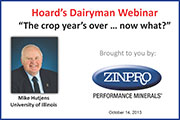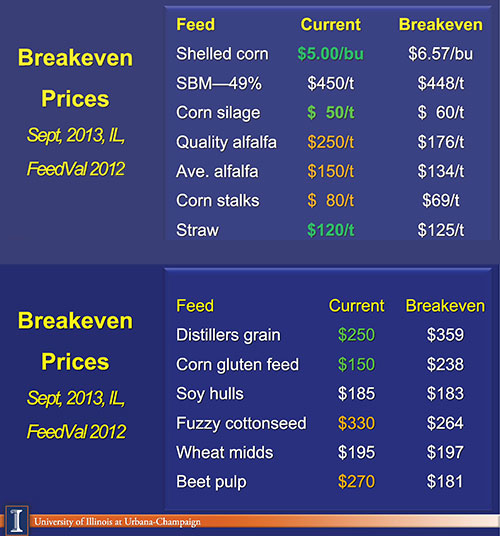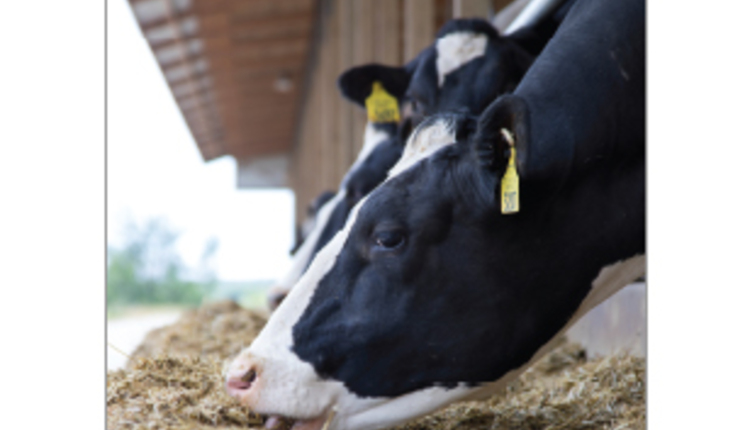 "The crop year's over ... now what?" That was the topic of the webinar on Monday, October 14. Mike Hutjens, University of Illinois, presented the webinar and provided options to help prodcuers prepare for next year.
"The crop year's over ... now what?" That was the topic of the webinar on Monday, October 14. Mike Hutjens, University of Illinois, presented the webinar and provided options to help prodcuers prepare for next year.The growing season has been a challenge for dairies – alfalfa winter kill, a wet spring, heat stress, flooding and drought. But, those are factors outside the producer's control. Mike focused on things the dairy can manage.
Understanding the market is an early step. Soybean production is up, while cotton inventories are down. Alfalfa seems to be leaning toward higher fiber hays this year. Corn silage looks normal, but there was late planted silage which could adjust results. If you take the current corn grain price per bushel and multiply it by 10, that is a good estimate of corn silage price per ton.
Knowing your operation's needs is a consideration as well. How is your forage inventory? Will you have enough feed or will you need to stretch your inventory with additional purchases?
Hutjens warned those that feed corn stalks not to feed them to dry cows, as there is an elevated chance for mycotoxins. He encouraged producers to treat corn stalks with calcium oxide. With the desire to get as much as you can from your fields, higher levels of dirt were found in many samples evaluated at labs – up to 19 percent ash. This adds weight to the tonage, but not nutrients to the feed.
Feeding straw increases milkfat and protein percents, but should be limited to no more than 2 pounds per cow per day. Water can be added for digestibility but, reports show mycotoxin possibilities in straw as well.
But, some feed will undoubtedly have to be purchased. Using FeedVal software, your individual feed costs and nutrient levels can be inputted to determine if purchasing specific feeds are a good buy, breakeven or not a good investment in relation to feed quality versus price paid. Below are Illinois breakeven prices from FeedVal.

Once you have your ration ingredients, it's time to look at on-farm losses such as shrink due to the environment (birds, spoilage, seepage and wind).
Here are some figures on feed loss:
- Forages (5 to 35 percent)
- Concentrates (2 to 10 percent)
- By-products (5 to 10 percent)
Once you have a ration in front of cows, how much are you having to push away at the end of the day? What portion of a perfectly balanced ration is being removed from top producing cows and feed to nonproducing livestock?
There is room in each operation for some fine tuning whether if it's in the field, the bunk or in the manger. If each operation analyzes their nutrition program, there will be a few items that can be tweaked, even slightly, that can limit lost feed and increase milk production. And once you have done that, your feeding program is ready for 2014.

The author is the online media manager and is responsible for the website, webinars and social media. A graduate of Modesto Junior College and Fresno State, she was raised on a California dairy and frequently blogs on youth programs and consumer issues.









